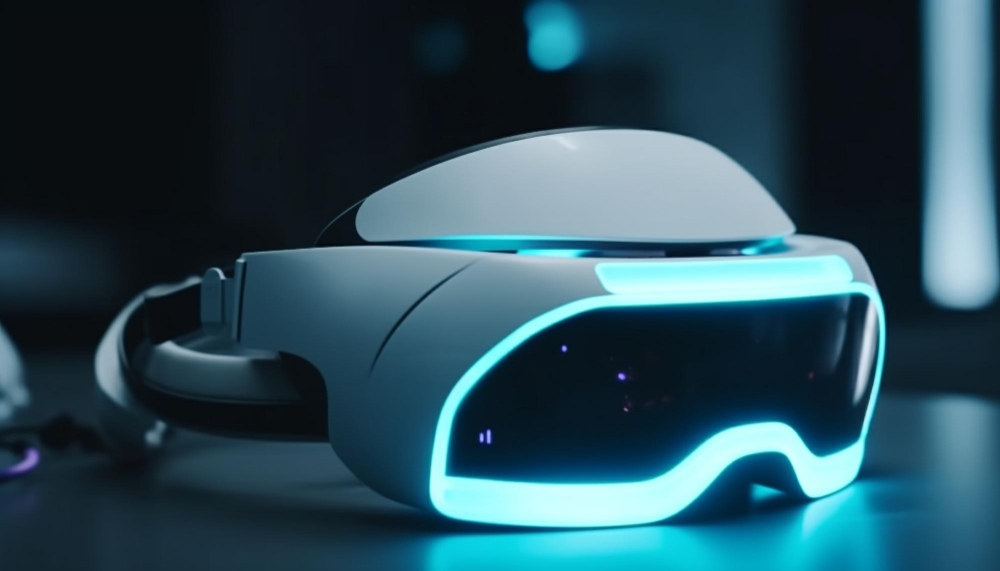Introduction
In the dynamic landscape of sports, technology is no longer just a sideline player; it’s become a game-changer. From enhancing athlete performance to engaging fans like never before, sports technology labs are revolutionizing the way we experience and understand sports. In this comprehensive guide, we delve into the exciting world of sports technology labs, exploring their impact on athlete training, injury prevention, fan engagement, and the overall future of sports.
1- Athlete Performance Enhancement
Sports technology labs are at the forefront of pushing human performance boundaries. Through advanced biomechanical analysis, wearable devices, and virtual reality simulations, athletes are gaining unprecedented insights into their strengths and areas for improvement. These labs employ cutting-edge motion capture systems to meticulously track an athlete’s movements, allowing for real-time feedback and adjustments. This data-driven approach helps athletes optimize their techniques and reduce the risk of injuries.
2- Biomechanics and Wearable Devices
Biomechanics, a critical aspect of sports science, studies the mechanics of human movement and how it impacts performance. Sports technology labs employ high-speed cameras and sensors to capture the minutiae of an athlete’s movements. By analyzing these data points, researchers can identify inefficiencies and provide personalized recommendations for enhancing performance.
Wearable devices, such as smartwatches and fitness trackers, have taken athlete monitoring to a new level. These devices collect data on heart rate, distance covered, and even sleep patterns, offering athletes and their trainers valuable insights into their overall well-being. The integration of this data with sophisticated software enables coaches to tailor training regimes to individual needs, leading to more effective and efficient workouts.

3- Virtual Reality (VR) Simulations
Virtual reality is not just for gamers; it’s revolutionizing athlete training. Sports technology labs develop immersive VR simulations that replicate real-game scenarios, allowing athletes to practice and refine their skills in a controlled environment. Quarterbacks can rehearse plays against virtual defenses, and soccer players can practice penalty kicks against virtual goalkeepers. This technology not only enhances muscle memory but also reduces the risk of injury during rigorous training.
4- Injury Prevention and Rehabilitation
One of the most significant benefits of sports technology labs is their contribution to injury prevention and rehabilitation. Injuries can be career-ending setbacks for athletes, but with advanced technology, the road to recovery has become more informed and efficient.
5- Biometric Monitoring and Predictive Analytics
Sports technology labs use biometric sensors to monitor an athlete’s physiological indicators in real time. By analyzing data such as heart rate variability and fatigue levels, trainers can identify signs of overexertion and potential injury risk. This enables them to make data-driven decisions about when to modify or halt training, helping athletes avoid overtraining and subsequent injuries.
Predictive analytics takes injury prevention a step further. By leveraging historical data and machine learning algorithms, sports technology labs can predict when an athlete is most susceptible to certain injuries based on their training load, movement patterns, and overall health. This foresight allows trainers to implement preemptive measures, such as altering training intensity or focusing on specific muscle groups, reducing the likelihood of injuries.
6- Rehabilitation Through Virtual Reality
Rehabilitation can be tedious and mentally taxing for athletes, but sports technology labs are introducing innovative solutions. Virtual reality is being used as a tool for rehabilitation, engaging athletes in interactive exercises that mimic real-world movements. This approach not only makes the rehabilitation process more enjoyable but also aids in regaining strength and mobility more effectively.

7- Fan Engagement and Immersive Experiences
Sports technology labs aren’t just shaping the athletes; they’re shaping the way fans experience sports. With the advent of augmented reality (AR) and virtual reality (VR), fans can engage with their favorite sports like never before.
8- Augmented Reality (AR) Fan Experiences
AR enhances fan engagement by overlaying digital content onto the real-world environment. Fans can use their smartphones or AR glasses to access real-time statistics, player profiles, and interactive game elements while watching a match in the stadium or from the comfort of their homes. This technology islands the gap between the physical and digital realms, creating a more immersive and interactive viewing experience.
9- Virtual Reality (VR) Stadium Experience
Imagine sitting courtside at a basketball game or in the front row of a football stadium, all from the comfort of your living room. VR technology is making this possible by offering fans a virtual seat at the game. Using VR headsets, fans can experience the game as if they were actually present, with the ability to switch viewpoints and even interact with virtual elements. This opens up new revenue streams for sports teams while providing fans with unprecedented access to their favorite sports events.
10- The Future of Sports Technology Labs
The evolution of sports technology labs shows no signs of slowing down. As technology continues to advance, these labs will play an even more significant role in shaping the future of sports.
11- Artificial Intelligence (AI) and Data Analytics
The integration of AI and data analytics is poised to revolutionize the way sports are strategized and played. AI algorithms can analyze vast amounts of data in real time, providing coaches with instant insights into opponents’ strategies and player performance. This data-driven approach enables quicker decision-making and enhances teams’ competitive edge.
12- Biomechanics and Performance Enhancement
Future biomechanics research will dive deeper into understanding the intricate mechanics of sports movements. By combining biomechanical data with AI, researchers can create highly personalized training regimens, fine-tuning techniques to a level of precision previously unattainable.
13- Sustainability and Environmental Impact
Sports technology labs are also addressing the environmental impact of sports events. From energy-efficient stadium designs to sustainable materials for equipment, these labs are contributing to the industry’s efforts to reduce its carbon footprint.
Conclusion
Sports technology labs are at the forefront of transforming the sports landscape. Through the innovative use of biomechanics, wearable devices, virtual reality, and predictive analytics, these labs are enhancing athlete performance, preventing injuries, and creating immersive fan experiences. As technology continues to advance, the future of sports technology labs holds the promise of even more exciting developments, from AI-driven insights to sustainable practices. The game is changing, and sports technology labs are leading the way.


